COVID-19 Update: Thursday, February 4
The following is the latest COVID-19 information from the state government as of 3:30 p.m. on Thursday, February 4, 2021.
Commonwealth of Pennsylvania
The state has posted a guide to getting a COVID-19 vaccine. The guide describes the vaccine phases and tells readers how to check on their eligibility, find a vaccine provider, and schedule an appointment.
 Department of Health – news briefing
Department of Health – news briefing
- The Department of Health gave a news briefing on the state’s COVID-19 efforts on Wednesday, February 3. It was conducted by Lindsey Mauldin, a department senior advisor.
- The Biden administration announced this week that it will be distributing vaccines to 60 Rite Aid and 100 TopCo pharmacies in Pennsylvania. This is part of a new federal distribution. TopCo is a company that operates its own pharmacies as well as pharmacies in retail establishments, including supermarkets – including, in Pennsylvania, Wegman’s, Shop Rite, Weis Markets, Redner’s, and others.
- This new allocation of vaccines is in addition to what the state is already receiving from the federal government.
- The federal government will begin giving states three weeks’ notice of incoming vaccine shipments, which should facilitate planning, transparency, and the scheduling of vaccines.
- The state does not operate a central state registry for people to sign up for COVID-19 vaccinations and does not plan to do so at this time. Instead, its web site offers a map people can use to identify local vaccine providers.
- The number of reported vaccines administered in Pennsylvania lags behind the number actually administered because regular vaccine providers have 24 hours to report their activity and retail pharmacy partners have 72 hours to report on their efforts.
Department of Health – by the numbers
- The number of new daily cases has declined significantly in the past week – well below November and December highs but still more than twice the daily highs recorded in the spring. On Tuesday the state passed the 850,000 mark for total COVID-19 cases.
- The daily death toll remains very high, although not as high as two weeks ago, and the state-wide total now exceeds 22,000.
- For the week from January 22 through January 28 the state’s overall COVID-19 test positivity rate fell to 9.3 percent; it was 10.5 percent the week before that. This marked the sixth consecutive week the rate fell.
- The numbers of Pennsylvanians hospitalized with COVID-19, in hospital ICUs, and on ventilators have all fallen to about two-thirds of what they were in mid-January.
- More than 23,000 health care workers in the state have contracted COVID-19.
- More than 76,000 long-term-care facility residents and employees have contracted COVID-19 in 1548 facilities in all 67 Pennsylvania counties.
- Currently, 20 percent of adult ICU beds in the state are unoccupied, as are 16 percent of medical/surgical beds, 16 percent of pediatric ICU beds, 30 percent of pediatric beds, and 33 percent of airborne isolation units.
- In its “Reduction of Elective Procedures” dashboard that tracks the criteria the state is using to determine whether to order hospitals to reduce or eliminate elective procedures to ensure their ability to handle possible influxes of COVID-19 patients, the state continues to flag a growing staffing shortage in hospitals in the state’s Keystone health care coalition region (Adams, Bedford, Blair, Centre, Cumberland, Dauphin, Franklin, Fulton, Huntingdon, Juniata, Lancaster, Lebanon, Mifflin, Perry, Snyder, and York counties). In that region, 41 percent of the region’s hospitals anticipate a staffing shortage in the coming week – more than the 33 percent level that the state believes poses a potential problem. The overall situation in the Keystone region, however, has not reached a point where the state would direct hospitals in this region to reduce or eliminate their elective surgeries. This situation has remained the same for the past month.
- As of February 4 the state’s vaccine dashboard shows that 651,000 Pennsylvanians have received their first dose of a COVID-19 vaccine and 230,000 have received both doses of vaccine. These numbers do not include Philadelphia, which operates its own COVID-19 vaccination program.
- The vaccine dashboard shows vaccine totals by county.
- As ordered by the Department of Health in late 2020, health care institutions – hospitals, FQHCs, and others – must reserve 10 percent of the doses of COVID-19 vaccines they received for non-hospital health care providers. The vaccine page on the department’s web site features a map of locations where non-hospital providers can obtain vaccines. The map includes contact information for non-hospital providers identifying whom they can contact to schedule their vaccines. State officials say more sites will be added to this map as more doses of COVID-19 vaccine become available.
 Department of Human Services
Department of Human Services
- DHS’s Office of Developmental Programs has updated its guidance for stakeholders on face coverings, close contact, screening protocols, and handwashing procedures.
- DHS’s Office of Long-Term Living and Office of Developmental Programs have updated their COVID-19 guidance for personal care homes, assisted living residences, and private intermediate-care facilities.
General Assembly
- The House and Senate both held hearings this week examining Pennsylvania’s vaccine distribution to date. Acting Secretary of Health Alison Beam testified, as did long-term-care providers and representatives of hospitals and pharmacies. Members of the House and Senate expressed frustration and concern with the state’s implementation of its vaccination plan. Their concerns included prioritization of target populations; vaccine allocation across counties; distribution logistics; transparency and accountability; scheduling and registration; and communication. View the House Health Committee hearing here and the Senate Health and Human Services Committee hearing here.
Around the State
- The Allegheny County Health Department has begun canceling COVID-19 vaccination appointments scheduled by people who do not meet the criteria for receiving vaccines at this time. As CBS Pittsburgh explains, those finding their appointments canceled are not very happy about it.
- The city of Philadelphia has opened its first mass vaccination site and plans five more by the end of the month, the Philadelphia Inquirer reports.
- The number of new COVID-19 cases in Allegheny fell nearly 40 percent in January, according to the Pittsburgh Tribune-Review.
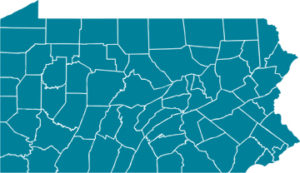 Resources to Consult
Resources to Consult
Pennsylvania Department of Human Services
Pennsylvania Department of Health
Centers for Disease Control and Prevention
 The Department of Health has amended its hospital reporting order effective on January 27, 2021 to require daily reporting to the CORVENA system by 10:00 a.m. instead of the previous 8:00 a.m. deadline. The order also was amended to include as a required data field “Other categories or data fields required by the federal data reporting system (TeleTracking)” to ensure that facilities are completing all necessary information for the Health Department’s upload from CORVENA into the Teletracking system. Go
The Department of Health has amended its hospital reporting order effective on January 27, 2021 to require daily reporting to the CORVENA system by 10:00 a.m. instead of the previous 8:00 a.m. deadline. The order also was amended to include as a required data field “Other categories or data fields required by the federal data reporting system (TeleTracking)” to ensure that facilities are completing all necessary information for the Health Department’s upload from CORVENA into the Teletracking system. Go  As of January 27 the state’s
As of January 27 the state’s  Office of the Governor/Vaccination Plan
Office of the Governor/Vaccination Plan President-elect Biden has nominated Pennsylvania Department of Health Secretary Rachel Levine to become assistant secretary of the U.S. Department of Health and Human Services.
President-elect Biden has nominated Pennsylvania Department of Health Secretary Rachel Levine to become assistant secretary of the U.S. Department of Health and Human Services. Pennsylvania’s Department of State has issued
Pennsylvania’s Department of State has issued 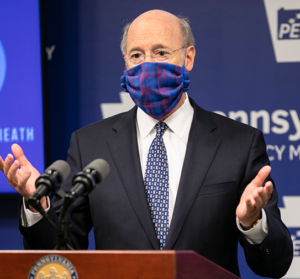 The Wolf Administration
The Wolf Administration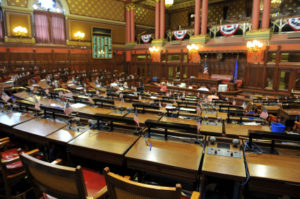 General Assembly
General Assembly  Provider Relief Fund
Provider Relief Fund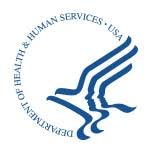 Department of Health and Human Services
Department of Health and Human Services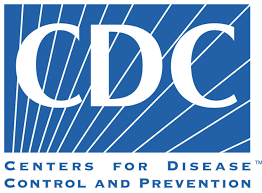 Centers for Disease Control and Prevention
Centers for Disease Control and Prevention The Department of Health has
The Department of Health has 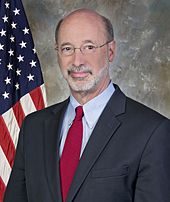 Last week the Governor’s Budget Office released a
Last week the Governor’s Budget Office released a  CMS has updated its
CMS has updated its